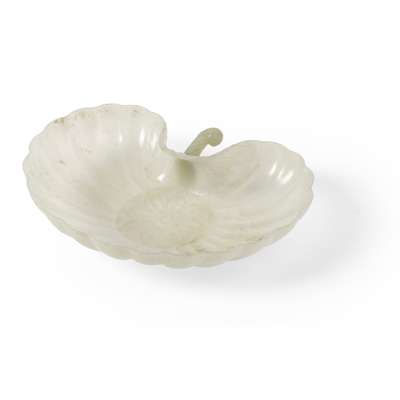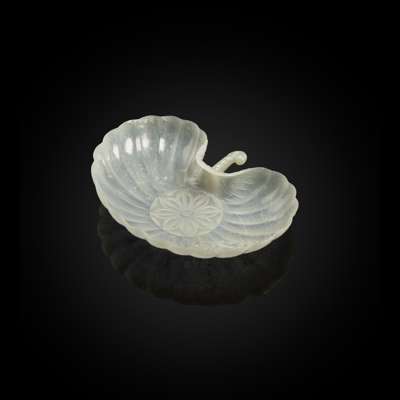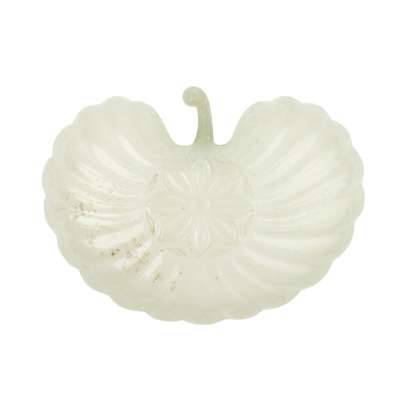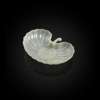
Lot 103

MUGHAL-STYLE PALE CELADON JADE SHELL-FORMED DISH
QING DYNASTY, 18TH CENTURY










Fine Asian & Islamic Works of Art
Auction: 16 May 2023 from 10:00 BST
Description
清 痕都斯坦青白玉雕蚌式盤
elegantly and thinly carved in the form of a delicate, symmetrical lobed shell, extending to a single curling foliate handle and raised on a low eight-petalled floral foot, the stone of even and translucent pale celadon colour
Dimensions
14.3cm wide
Provenance
Provenance: Private French collection
Footnote
Note: Mughal style jade vessels were greatly admired by the Qing Court and the Qianlong Emperor in particular. One of Qianlong Emperor's great passions was jade, and particularly treasured those he termed 'Hindustan' (Hengdusitan or Wendusitan) jades. Such was his fascination with these foreign jades that in 1768 he wrote a scholarly text on the geography of Hindustan and the derivation of its name, identifying an area in what is now northern India centring on the city of Agra. In the eighteenth century, this area was part of the Mughal Empire and thus the jades are today often referred to as 'Mughal' jades. Jade carving had reached new heights under the rule of the great Mughal Emperor Shah Jahan (1627-58), and it was this style that appears to have particularly appealed to the Qianlong Emperor, although he also collected jades from other parts of the Muslim world.
This particular shell form is comparably rare and further demonstrated in the Imperial collections in the National Palace Museum, Taipei, museum no. Gu Yu 故玉 1060. Another highly important Mughal jade shell-formed cup, dated to the 17th century and inscribed with a Qianlong imperial poem dated to 1744, was sold at Christie's Hong Kong, 27 May 2008, lot 1527.









